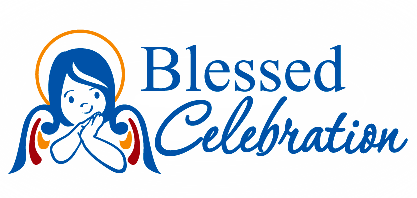Greek Costumes by Region

Traditional dress costumes in Greece vary significantly by region, each reflecting unique cultural influences, historical backgrounds, and local traditions. Some of the distinct dress costumes from different regions of Greece:
Epirus Region ( Ήπειρος, Ípiros )
- Location: A region of north western Greece (and southern Albania).
- Main Costume Styles: Epirus Girl, Vlachopoula, Souliotissa, Vlach Girl, Ntoulamas Mesolongi, Zitsa Girl, Zagori,
- Women’s Costumes from Epirus: are characterized by their heavy woolen fabrics and rich embroidery. Includes long, flowing skirts with embroidered aprons and blouses. They often wear shawls and headscarves for warmth.
- Men’s Costumes from Epirus: Men wear woolen trousers with embroidered vests and jackets. They may also don traditional caps or fezzes.
Macedonia Region
- Location: Northern Central Greece. It is the largest geographic region in Greece.
- Main Costume Styles: Macedonia, Kastoria, Florina, Orini , Episkopi Imathias, Chalkidiki, Veria
- Women’s Costumes from Macedonia: Macedonian costumes are known for their vibrant colors and intricate patterns. Women traditionally wear long, pleated skirts with embroidered blouses and vests. They may also wear aprons and elaborate headpieces.
- Men’s Costumes from Macedonia: Men typically wear trousers with embroidered shirts and vests. They may also accessorize with sashes and traditional hats.
Peloponnese Region
- Location: The Peloponnese Region is a peninsula located at the southern tip of the mainland. It is connected to the central part of Greece by the Isthmus of Corinth southern Greece.
- Main Costume Styles: Maniatissa, Maniatis, Corinth, Nestani Arkdias, Tegea Arcadia
- Women’s Costumes from Peloponnese: Women's attire typically consists of long, colorful skirts paired with embroidered blouses and vests. They may also wear shawls and headscarves.
- Men’s Costumes from Peloponnese: Men often wear baggy trousers with embroidered shirts and vests. They may accessorize with sashes and hats adorned with feathers or tassels.
Thrace Region
- Location: Thrace is a region in north eastern Greece - bordered by the Balkan Mountains north, the Aegean Sea south, and the Black Sea east. Northern Thrace is part of southeastern Bulgaria. Western Thrace is part of Northweastern Greece and East Thrace is part of Turkey.
- Main Costume Styles: Thrace, Metaxades
- Costumes: Thrace's costumes are influenced by both Greek and Turkish cultures, reflecting the region's multicultural heritage.
- Women’s Costumes from Thrace: colorful skirts with embroidered blouses and vests. Headscarves and jewelry.
- Men’s Costumes from Thrace: trousers with embroidered shirts and vests. They may also wear traditional headgear such as the "fesi" or "koukoulaki."
Vlach Region
- Main Styles: Vlach, Vlaha
- Women’s Costumes from Vlach:
- Men’s Costumes from Vlach: trousers
Sarakatsanos Region
- Main Styles: Sarakatsanos, Karagouna
- Women’s Costumes from Sarakatsanos:
- Men’s Costumes from Sarakatsanos: trousers
Aegean Islands Region
- Main Styles: Aegean Island, Cyclades, Bouboulina, Greek Island, Hydra, Andros, Skyros, Lemnos, Sporades, Samos, Xios, North Aegean, Mykonos
- Women’s Costumes from Aegean Island Region:
- Men’s Costumes from Aegean Island Region: trousers
Ionian Islands Region
- Main Styles: Corfu, Kefalonia, Cephalonian, Kerkira, Eptanisa
- Women’s Costumes from Ionian Islands:
- Men’s Costumes from Ionian Islands: trousers
Cretan Islands Region
- Main Styles: Crete
- Cretan costumes are known for their intricate embroidery and colorful designs.
- Women’s Costumes from Crete: Women traditionally wear long, pleated skirts with a tight bodice and a white blouse. They often accessorize with vests, aprons, and elaborate headscarves.
- Men’s Costumes from Crete: Men typically wear knee-length breeches called "vraka" paired with embroidered vests, fringed sashes, and headgear such as the "sariki" or "xerotiana."
Dodecanesse Region (“12 Islands Region”)
- Location: Greek islands in the Southeastern seas of the Aegean ocean. Although the region name translates to 12 islands, it really holds 15 main islands and 150 smaller ones. The main islands include: Rhodes, Kos, Patmos, Kárpathos, Kásos, Astipálaia, Lipsoí, Léros, Kálimnos, Nísuros, Tílos, Chálki, Sými
- Main Styles: Rhodes, Karpathos, Vrakofors, Lipsi, Castelorizo Megisti
- Women’s Costumes from Dodecanesse Region: Rhodes carries the many style of these costumes – specifically the town of Emponas. The traditional dress is a shofter dark dress with colorful trims at bottom and a white underdress. A headscarf covers women’s hair and can be of a variety of colors.
- Men’s Costumes from Dodecanesse Region:
Cypriot Region
- Location: An island country located east of Greece, north of Egypt, south of Turkey, and west of Syria
- Main Styles: Cyprus
- Women’s Costumes from Cyprus: often an open striped dress with an inner cotton dress, cotton pants and waist scarf.
- Men’s Costumes from Cyprus: often an embroidered and often elaborate dark vest with embellishments (zibouni) and shirt, pleated trousers (vraka) and a sash and headscarf. The vest is often short and fitted – sometimes crossed over and fastened. Boots complete the look… and were traditionally worn by men to protect them from the many snakes on the island.
Pontos Region
- Location: a region on the southern coast of the Black Sea, located in the modern-day eastern Black Sea Region of Turkey.
- Costumes from this region: Asia Minor, Kato Panagia
- Women’s Costumes from Peloponnese: Colorful long dresses with an angled waistband (zonar). The waistband (zonar) is traditionally made of wool or cotton and up to 3 meters (9.8 feet) long and folded into a triangle when wrapped around. The dress carries a traditional velvet vest decorated with gold embroidery or embellishments. The hat - known as a tapla - is a small flat hat decorated with coins (tapla) and often worn toward the front of the head. (Fun fact - the gold coins are worn by married women and eligible women for marriage. Elderly women wear a scarf or hat with no coins).
- Men’s Costumes from Peloponnese: trousers/shortened puffy pants often with boots. Worn with a scarf around the waist (tarapoulouz). A short vest is worn often with buttons that cross over the front. Headpiece is a wrapped scarf of varying design.
